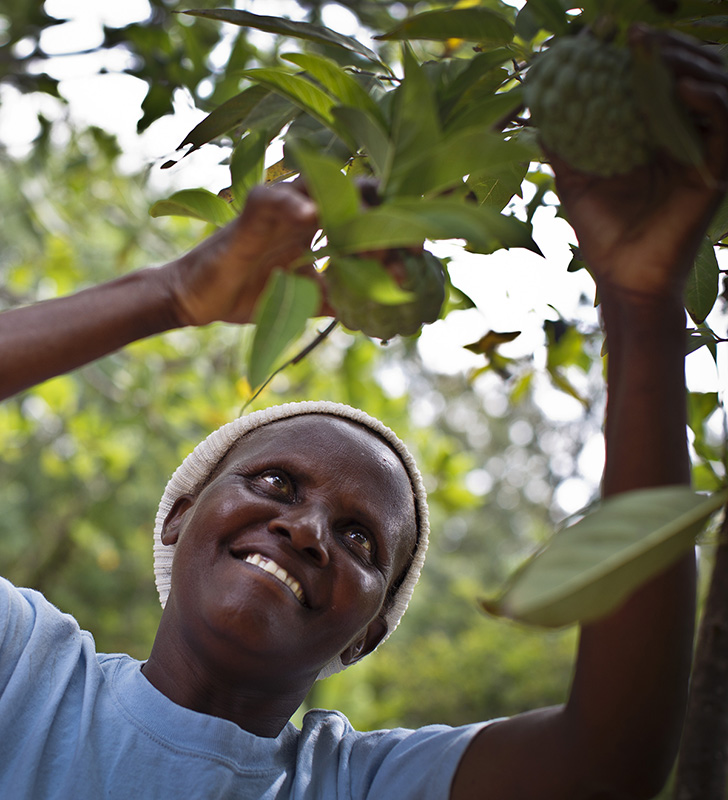Although Agriculture is one of the drivers of inclusive and sustainable growth, smallholder farmers are not immune to the unique challenges within the sector. AGRA has identified financing as a major barrier to growth in Africa’s agriculture sector, particularly among smallholder farmers.
On the one hand when farmers and businesses lack collateral and banks struggle to price the risk of loans to farmers and small to medium sized agribusinesses on the other hand, facilitated access to capital and other financial products, plays an important role in the overall strategy to improve the productivity, livelihoods and food security of smallholder farmers.
The Deputy Governor Bank of Uganda, Louis Kasekende, recently admitted that the Agriculture Credit Facility set up by government to support agriculture cannot solve all the financing requirements of the sector. The credit facility housed by the Central Bank of Uganda is borrowed by commercial banks, which in turn lend to farmers at affordable interest rates.
However, this observation does not reduce the frustrations of Uganda’s smallholder farmers like Philip Idro and Joyce Santa. They wanted to know from Kasekende why the banks still refuse to lend them. Although the commercial sector holds considerable liquidity, its risk perception of small-scale farmers and agribusinesses is high. This is particularly the case for women and youth.
“Not all segments of agriculture will be supported by a traditional bank,” explained Kasekende. “If am a banker and your level of productivity is only half a kilogram of grain, are you commercially viable?”
These are some of the dilemmas confronted by development actors in the agricultural and rural sectors. Although Africa’s food systems are undergoing dynamic change and creating many new growth opportunities, finance is an integral part of the agricultural transformation required to support its full exploitation.
At a recent two-day meeting on Making Finance Work for Agriculture organized by Uganda Agribusiness Alliance in Kampala, Uganda with support from AGRA, NEPAD, African Union and Grow Africa, participants discussed interventions to make agriculture credit accessible to smallholder farmers.
Ololade Adesola, a banker from Nigeria added that banks need the assurance that when they lend their risks are covered. This could be complemented by other financial services offering cyclical cash flows such as insurance and saving products to reduce the risk of external shocks that confront farmers. She noted that banks needed to understand the identified risks in agriculture including financial, production, management and market risks.
AGRA and its partners agree that agricultural transformation must focus on a market driven business agenda that encompasses the entire food system, not just agricultural production as has been the case. To be inclusive, interventions must also promote the growth of small farms and small and medium enterprises in the continent’s food systems. This requires public sector policies and investments that are proactive as well as viable private partnerships.
“We should think of other solutions appropriate to the farmers,” Kasekende said. The Bank of Uganda facility delivered on its mandate with a total of 594 applications valued at almost Ush 467 billion and 456 disbursements valued at Ush 282.5 billion, with a 1% default rate.
“On that basis alone, we have done very well, however, since the facility was set up to address agriculture financing in general, it may not have addressed all the emerging issues as we have heard from the farmers,” he explained. “These are some of the lessons learned over the years, and we need to address the gaps.”
Some practical suggestions include technical assistance for business services that assist smallholder farmers to enhance their productivity and create linkages with markets and market intermediaries. Similarly, market intermediaries require similar help to enhance the scope of their operations that enables them to procure surpluses from farmers.
“Let us identify those problems and identify the mismatch between the products we have and the requirements of farmers,” suggested Kasekende. “A simple thing like minimum production standards could impact negatively on a farmer, making her less productive and less competitive on the market.”





